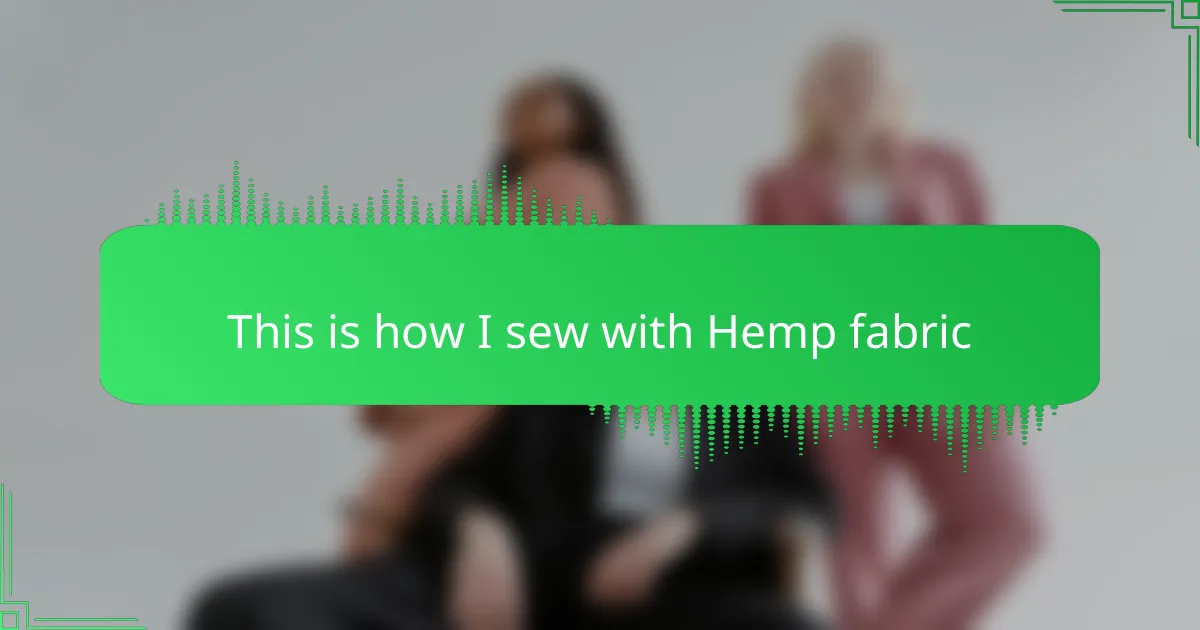Key takeaways
- Hemp fabric is eco-friendly, durable, and becomes softer with washing, making it ideal for comfortable t-shirts.
- Proper preparation, such as pre-washing and using the right tools, enhances sewing efficiency and fabric longevity.
- T-shirt sewing involves careful techniques including using a stretch stitch and gentle care to maintain the fabric’s natural qualities.
- Caring for hemp clothing is simple, requiring cold washes and mild detergents to preserve both texture and durability.
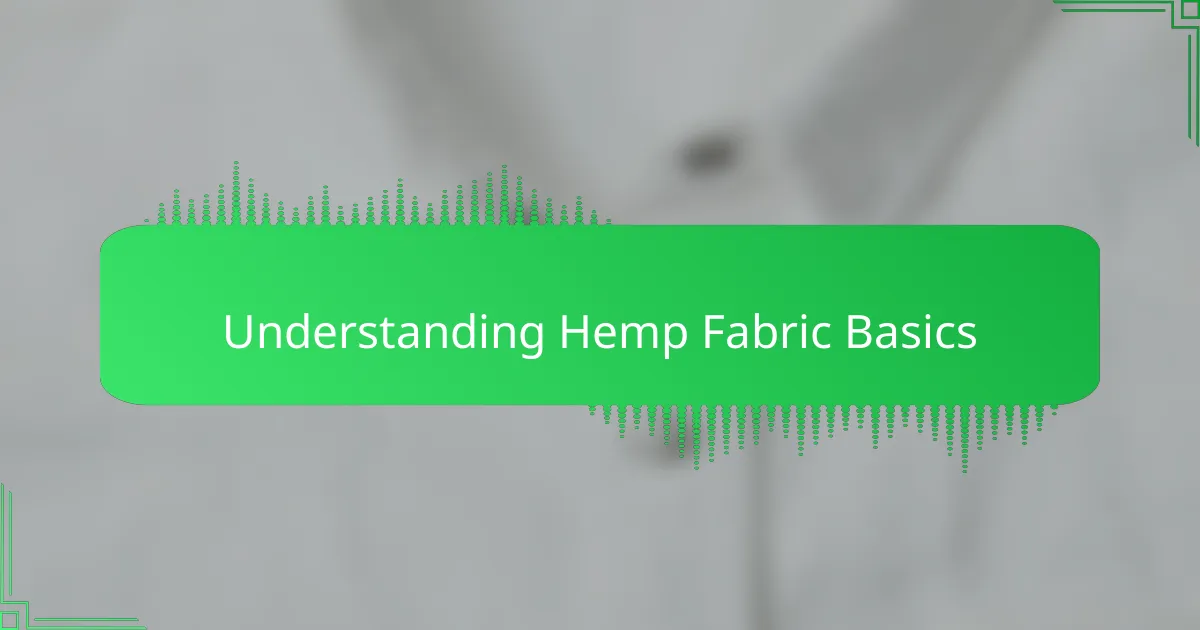
Understanding Hemp Fabric Basics
Hemp fabric has always intrigued me because of its eco-friendly nature and durability. When I first started sewing with hemp, I noticed it’s coarser than cotton but softens beautifully after a few washes. Its breathability makes it perfect for t-shirts, especially when you want something sustainable yet comfortable.
| Feature | Hemp Fabric |
|---|---|
| Texture | Initially coarse, softens with wash |
| Durability | Very strong and long-lasting |
| Breathability | Excellent, keeps you cool |
| Environmental Impact | Low, grows quickly without pesticides |
| Feel | Natural, slightly textured but comfortable |
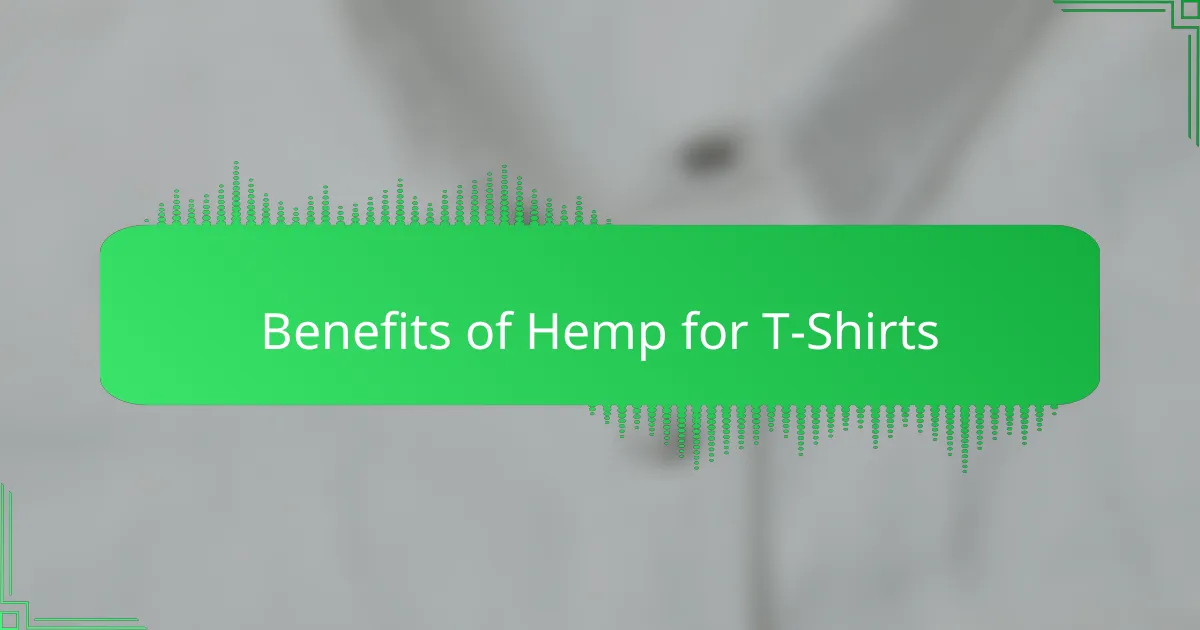
Benefits of Hemp for T-Shirts
Hemp fabric has quickly become one of my favorite materials for making t-shirts. Its natural durability means my tees last longer, even after numerous washes, which gives me that satisfying feeling of crafting something truly lasting. Plus, the breathability of hemp keeps me comfortable all day, especially when I’m out and about in the summer heat.
From my experience, hemp offers not just comfort but also some impressive environmental perks that align with my values. Here are a few benefits I’ve come to appreciate when sewing with hemp fabric for t-shirts:
- Naturally antimicrobial, reducing odors and bacterial growth
- Highly breathable and moisture-wicking, keeping skin dry
- Strong and durable, resisting wear and tear over time
- Becomes softer with each wash without losing shape
- Requires less water and pesticides to grow compared to cotton
- Biodegradable and environmentally friendly material
- Unique texture that adds a rustic, natural aesthetic to designs
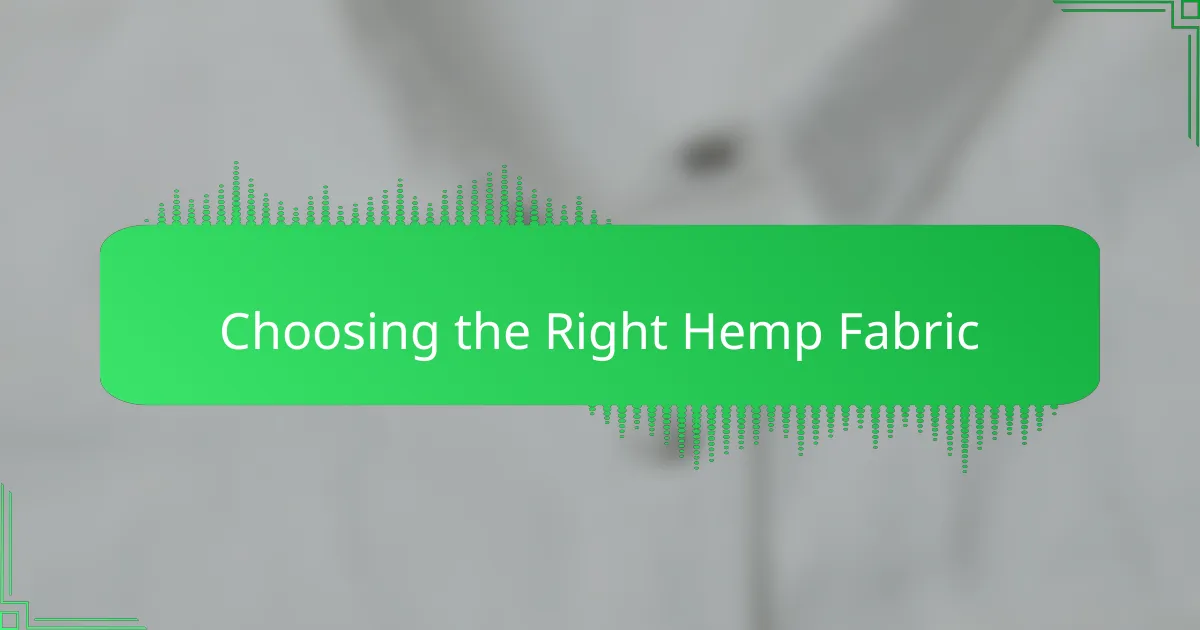
Choosing the Right Hemp Fabric
Choosing the right hemp fabric felt like a game-changer for me. I noticed that lighter hemp fabrics made my t-shirts feel airy and comfortable, perfect for casual wear. Meanwhile, heavier weaves gave a sturdy feel, great when I wanted more durability or a rugged look.
| Fabric Type | Best For |
|---|---|
| Lightweight Hemp | Soft, breathable t-shirts for everyday comfort |
| Medium-weight Hemp | Versatile shirts balancing durability and softness |
| Heavyweight Hemp | Rugged designs needing extra strength and structure |
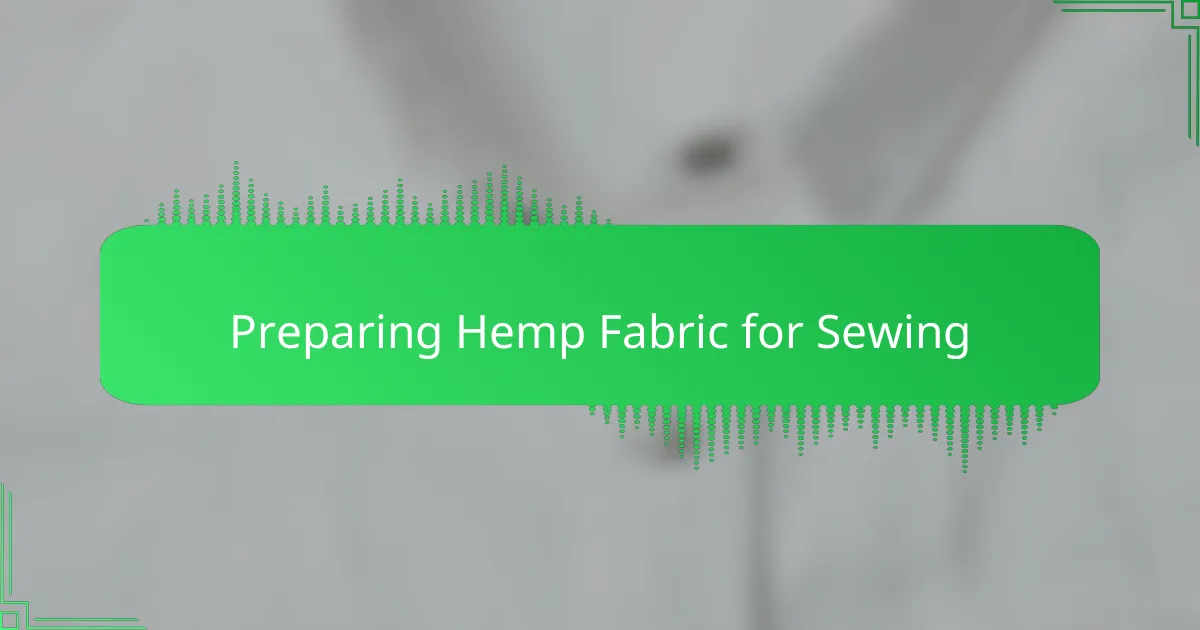
Preparing Hemp Fabric for Sewing
Preparing hemp fabric for sewing is a crucial step that I never overlook, especially because hemp has a unique texture that can be a bit stiff initially. Over time, I’ve learned that properly preparing the fabric not only makes sewing easier but also enhances the softness and durability of the final garment.
One detail I always pay attention to is pre-washing the hemp fabric to remove any natural residues and to pre-shrink it. From my experience, this step helps avoid surprises like unexpected shrinking after the t-shirt is made. Here’s how I prepare my hemp fabric before starting any project:
- Pre-wash the fabric in cold water with a mild detergent to preserve fiber integrity
- Avoid using fabric softeners as they can affect hemp’s natural texture
- Hang or lay flat to dry to prevent distortion
- Iron the fabric on a medium setting to smooth out wrinkles and make cutting easier
- Check for any defects or inconsistencies in the weave that could affect sewing quality
This preparation routine has made a noticeable difference in how the fabric behaves under my sewing machine and in the comfort of the finished t-shirt.
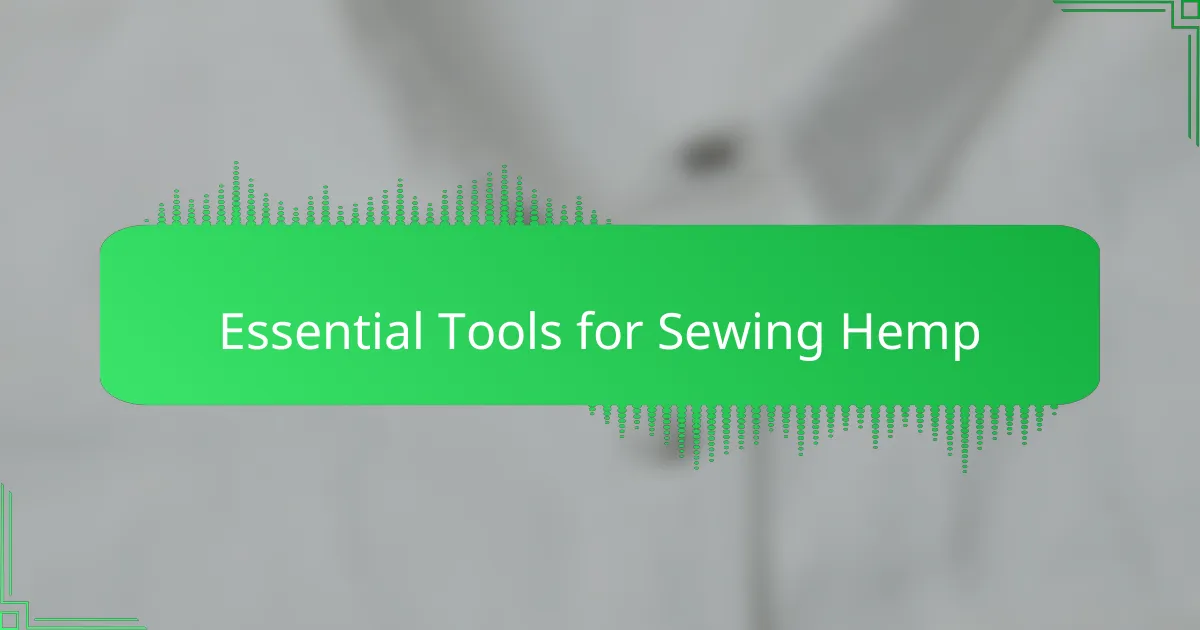
Essential Tools for Sewing Hemp
Essential tools make all the difference when sewing hemp fabric because its natural fibers can be tougher than typical cotton. From my experience, investing in sharp needles designed for heavy fabrics and a strong thread ensures you don’t end up frustrated with broken stitches. A quality rotary cutter also speeds up cutting while keeping edges clean, which is something I appreciate during long projects.
| Tool | Why It’s Essential |
|---|---|
| Heavy-Duty Sewing Needles | Penetrate thick hemp fibers without breaking or bending, providing smooth stitching. |
| Strong Thread (Polyester or Nylon) | Holds hemp fabric securely and withstands wear and tear over time. |
| Rotary Cutter | Makes precise, clean cuts through dense hemp, saving time and effort. |
| Sharp Scissors | Helps trim fabric edges neatly after cutting, essential for a polished finish. |
| Measuring Tape | Ensures accurate fabric measurements, crucial when working with hemp’s natural stretch and texture. |
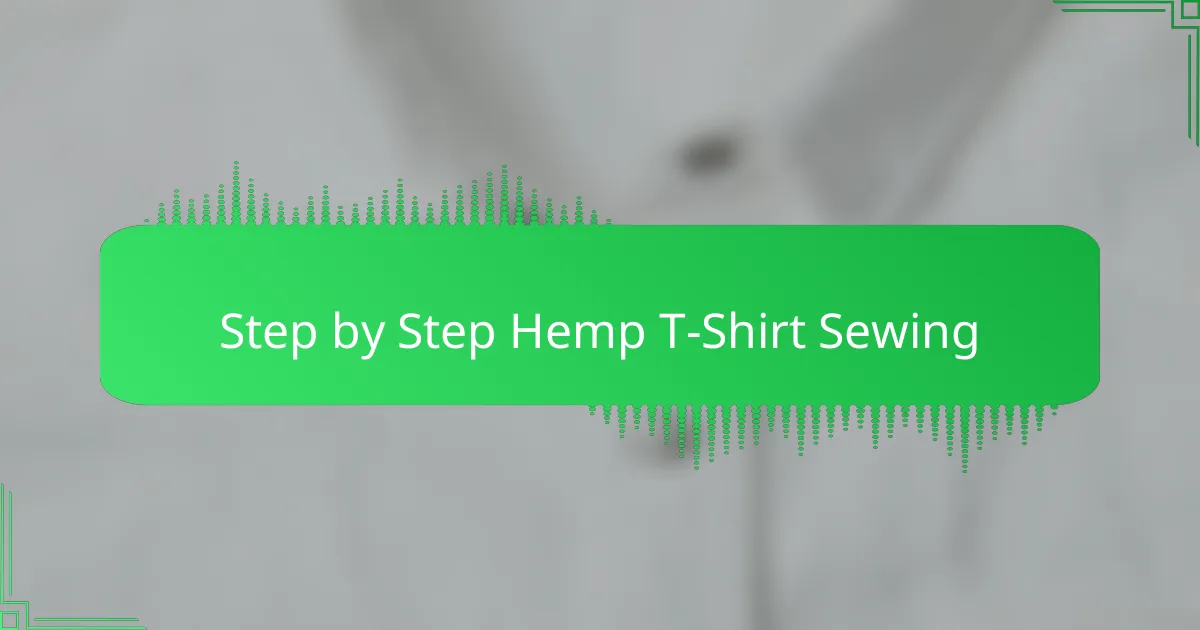
Step by Step Hemp T-Shirt Sewing
Sewing with hemp fabric has become one of my favorite processes, especially for t-shirts. The texture is unique—it feels sturdier than cotton but still softens beautifully after washing. When I first worked with hemp, I was surprised by how well it held stitches without puckering, which made the sewing experience smooth and satisfying.
Here’s a simple step-by-step guide to sewing your own hemp t-shirt, based on what I’ve learned through trial and error:
- Pre-wash the hemp fabric to prevent shrinking and soften the material.
- Cut your pattern pieces carefully, as hemp can be slightly stiff initially.
- Use a ballpoint needle to avoid damaging the fibers during sewing.
- Opt for a stretch stitch or narrow zigzag stitch to maintain fabric flexibility.
- Sew the shoulder seams first to create the t-shirt’s basic shape.
- Attach the sleeves using easing techniques to handle the fabric’s thickness.
- Hem the edges with a double needle for a professional finish that allows stretch.
- Press seams lightly with a warm iron to avoid crushing the hemp’s texture.
I remember the first time I finished a hemp t-shirt—it felt rewarding knowing the fabric was not only eco-friendly but also gave the finished product a rugged, natural appeal. That combination of durability and comfort is really what keeps me coming back to hemp.
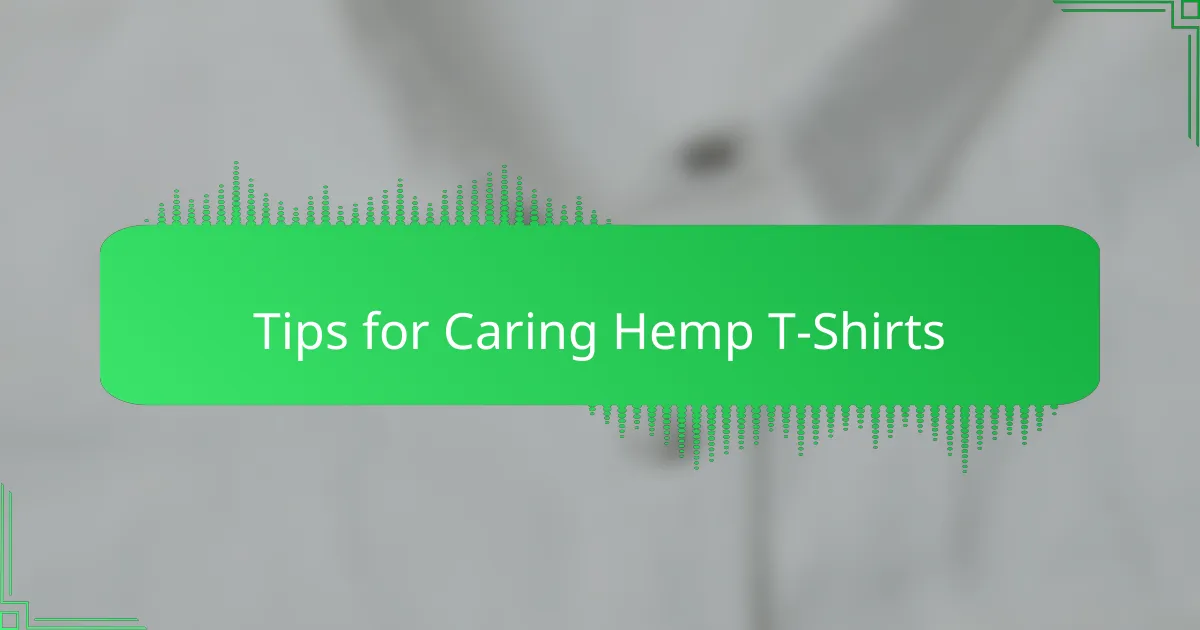
Tips for Caring Hemp T-Shirts
Caring for hemp t-shirts is simpler than you might expect, but it does require a bit of attention to keep that natural texture and durability intact. From my experience, washing hemp garments gently helps preserve their strength and prevents the fabric from becoming too rough or worn over time.
Here are some practical tips I follow to maintain my hemp t-shirts looking fresh and feeling comfortable:
- Wash in cold water to protect the fibers and prevent shrinking.
- Use mild detergent free of bleach or fabric softeners, which can damage hemp fibers.
- Avoid high heat when drying; air drying or low heat tumble drying works best.
- Turn the shirt inside out before washing to reduce abrasion on the design and fabric surface.
- Avoid ironing at very high temperatures; a warm iron will smooth wrinkles without harming the fabric.
Following these steps has kept my hemp tees not only strong but also soft and wearable for years. It’s amazing how a little care goes a long way with such a sustainable material.
